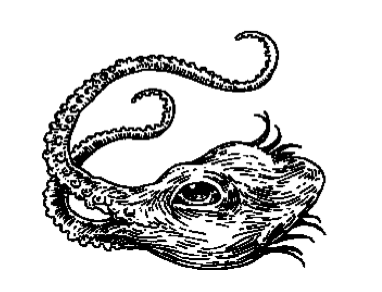I. Remedies to Reality
Michel Houellebecq, in his adoring study of H.P. Lovecraft, asserts: “Those who love life do not read.” Houellebecq follows this tantalizingly bleak pronouncement with a rousing battle cry, tailor-made for these implied nonlovers of life—“We need a supreme antidote against all forms of realism.” For many readers, Lovecraft is this antidote; like Lovecraft himself, these readers have found odd solace in the viscerally horrific by-products of his lively imagination.
Howard Phillips Lovecraft (1890–1937), the master of blood-curdling weird fiction, who lived most of his short life in Providence, Rhode Island, and toiled over his oozing creations in obscurity, has spawned enormous amounts of “antireality” activity. The mythos he created is regularly recalled in the fiction of other writers as if it were a fundamental building block of horror fiction. But his work has also penetrated and then metastasized inside universes other than the literary one—most notably in the universe of film. Perhaps this metastasis is due to the centrality of dreams in Lovecraft’s work, and the fact that film can most closely mimic the visual experience of dreaming. Lovecraft often recorded his own dreams in his letters to his friends, and some of his stories are direct transcriptions of dreams. Writing on December 11, 1919, he describes a nightmare:
I seemed to be seated in my chair clad in my old grey dressing-gown, reading a letter from Samuel Loveman. The letter was unbelievably realistic—thin, 81⁄2” x 13″ paper, violet ink signature, all—its contents seems portentous. The dream-Loveman wrote:
“Don’t fail to see Nyarlathotep if he comes to Providence. He is horrible—horrible beyond anything you can imagine—but wonderful. He haunts one for hours afterward. I am still shuddering at what he showed.”
I had never heard the name Nyarlathotep before, but seemed to understand the allusion. Nyarlathotep as a kind of itinerant showman or lecturer who held forth in publick halls and aroused widespread fear and discussion with his exhibitions [… that] consisted of two parts—first, a horrible—possibly prophetic—cinema reel, and later some extraordinary experiments with scientific and electrical apparatus.”
Yet literal translations to film risk failing to convey the ineffable terror of Lovecraft’s otherworldly entities. Straight visual interpretations of his tentacled monsters seem reductive at best, at worst, laughable. Nonetheless, films of his works abound. The successful ones manage to strike the same disconcerting note as his writing: a vortex of the abhorrent opens in the midst of our otherwise recognizable world.
II. What’s Lovecraftian?
A prime example of a film considered brilliant by all Lovecraft aficionados is the first Alien (dir: Ridley Scott, 1979). Lovecraft has been described as the successor to Edgar Allan...
You have reached your article limit
Sign up for a digital subscription and continue reading all new issues, plus our entire archives, for just $1.50/month.
Already a subscriber? Sign in





